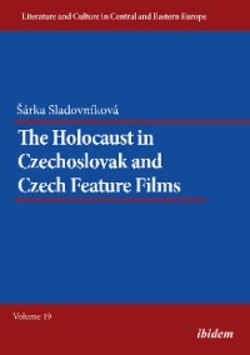Читать книгу The Holocaust in Czechoslovak and Czech Feature Films - Šárka Sladovníková - Страница 5
INTRODUCTION
ОглавлениеThe Holocaust became a theme in Czechoslovak film three years after World War II.1 Between 1948 and 1958 only one film about the Holocaust (Distant Journey) was made; the lack of other such motion pictures can be explained as a consequence of Stalinist anti-Semitism. The first group of films focusing on Holocaust themes appeared in the 1960s during the European cinematic New Wave. Over the course of a decade, about a dozen films were made that are still considered part of the Czechoslovak film canon due to their outstanding quality. After the violent suppression of the Prague Spring by the armies of the Warsaw Pact in August 1968, production of Holocaust-themed films ceased for another ten years as a result of “Normalization”. From 1970 to 1979 not a single motion picture was made about the Holocaust. After 1989 there was a renaissance in these films, which continues until today. The approach to this topic has changed over time—from suppressing Jewish themes in the 1950s and early 1960s to emphasizing them after 1989.
Film has great potential for bringing the past to life for viewers and for influencing how it will be stored in their memories. This potential is strengthened by the illusion of reality present in film narratives:
Of all art forms, film is the one that gives the greatest illusion of authenticity, of truth. A motion picture takes a viewer inside where real people are supposedly doing real things. We assume that there is a certain verisimilitude or certain authenticity but there is always some degree of manipulation, some degree of distortion. (Annette Insdorf in: Imaginary Witness 2004)
Narrative is the basic principle of film (as well as of epic storytelling): “[…] all films, we now know, are fiction, whose impression of reality is built on the coherence of the narrative world they establish” (Baron 2006, 15). The difficulty of capturing the Holocaust on screen is also a result of the “non-communicable nature” of survivors’ experiences. When compared to literature, a film scene is highly specific and subjective. “Whereas words engender the imagination, film images show a sensorially concrete reality” (Mravcová 1990, 10).
This book2 examines how narratives about this theme developed, how representations of Jewishness changed, and whether literary stereotypes appear in these films. It focuses on feature-length films; selected documentary films, shorts, and animated films are mentioned in footnotes where relevant.3
1 I would like to thank Mr. Karel Sieber, archivist at Czech Television, for greatly assisting me with my research.
2 This book was supported by the Prague Centre for Jewish Studies (Rothschild Foundation).
3 Some feature films are mentioned only in a footnote. These films are Smrť sa volá Engelchen [Death Is Called Engelchen, 1960], Boxer a smrť [The Boxer and the Death, 1962], and Námestie svätej Alžbety [St. Elisabeth Square, 1965]; and they were filmed by Slovak directors in Slovak language.
